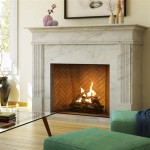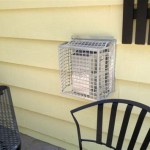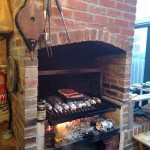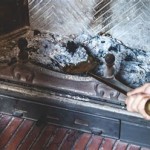Here is an article about the best wood-burning fireplaces for heating, written according to the provided specifications:
Best Wood Burning Fireplaces For Heating
Wood-burning fireplaces have long been appreciated for their aesthetic appeal and ability to create a cozy ambiance. However, beyond their decorative value, many modern wood-burning fireplaces are designed specifically for efficient home heating. These fireplaces offer a viable alternative or supplement to traditional heating systems, providing warmth and reducing reliance on fossil fuels. Selecting the right wood-burning fireplace for heating requires careful consideration of various factors, including heating capacity, efficiency, safety features, and environmental impact.
This article explores the key aspects of choosing the best wood-burning fireplace for effective and sustainable heating. It delves into the features that differentiate heating-focused fireplaces from purely decorative models, and discusses the technological advancements that contribute to improved efficiency and reduced emissions. Information regarding fireplace types, sizing considerations, installation requirements, and fuel selection are also presented to facilitate informed decision-making.
Heating Efficiency: The Core of a Heating Fireplace
The heating efficiency of a wood-burning fireplace is paramount when the primary goal is to warm a living space. Efficiency is measured as the percentage of the wood's energy that is converted into usable heat. Traditional open fireplaces typically have very low efficiency ratings, often below 10%, with much of the heat escaping up the chimney. Modern heating fireplaces, on the other hand, can achieve efficiencies ranging from 60% to over 80%, thanks to advanced combustion technology and design features.
Key features that contribute to higher efficiency include a closed combustion system. This system uses a tightly sealed firebox to control airflow, promoting more complete combustion of the wood. Baffles and secondary combustion chambers force the hot gases to mix with preheated air, burning off pollutants and extracting more heat. Catalytic combustors, found in some high-efficiency models, further reduce emissions by oxidizing unburned gases at lower temperatures. Firebox insulation also plays a crucial role in retaining heat and increasing the overall efficiency of the fireplace.
EPA-certified fireplaces are tested and approved to meet strict emission standards, which also correlate to higher burning efficiency. These fireplaces are designed to burn cleaner and more completely, using less wood to produce the same amount of heat compared to older, non-certified models. When selecting a wood-burning fireplace for heating, prioritizing EPA-certified models is essential for maximizing efficiency and minimizing environmental impact.
Types of Wood Burning Fireplaces for Heating
Several types of wood-burning fireplaces are designed with heating as a primary function. These include wood stoves, fireplace inserts, and masonry heaters. Each type offers distinct advantages and disadvantages based on design, installation requirements, and heating capabilities.
Wood stoves are freestanding units that can be placed in various locations within a room. They are typically constructed from cast iron or steel and are known for their high heating efficiency and ability to radiate heat effectively. Wood stoves are relatively easy to install compared to other types of fireplaces, requiring only a suitable hearth and chimney connection. Their compact size makes them suitable for smaller spaces.
Fireplace inserts are designed to be installed inside existing masonry fireplaces. They offer a way to upgrade an inefficient open fireplace into a more effective heating appliance. Inserts typically feature a closed combustion chamber, air wash system to keep the glass clean, and a blower to circulate warm air into the room. Their installation involves connecting the insert to a chimney liner, which helps improve draft and ensures safe venting of combustion gases.
Masonry heaters, also known as Russian fireplaces or Finnish fireplaces, are large, massive structures constructed from brick, stone, or other heat-absorbing materials. They operate by burning a hot, intense fire for a short period of time, and then slowly releasing the stored heat over many hours. Masonry heaters offer exceptional heating efficiency and can provide a consistent, comfortable warmth for extended periods. Their complex construction requires professional installation and a significant commitment of space.
Sizing and Installation Considerations
Proper sizing is crucial for selecting a wood-burning fireplace that effectively heats a given space. A fireplace that is too small will struggle to maintain a comfortable temperature, while one that is too large can lead to overheating and wasted fuel. The heating capacity of a fireplace is typically measured in British thermal units per hour (BTU/hr), which indicates the amount of heat it can produce.
Factors to consider when sizing a fireplace include the size of the room or area to be heated, the climate, insulation levels, and the desired temperature. As a general guideline, a fireplace with a BTU output of 40,000 to 60,000 BTU/hr may be suitable for heating a moderately sized living room in a temperate climate. Professional assessment is recommended to determine the appropriate size for specific needs.
Proper installation is essential for the safe and efficient operation of a wood-burning fireplace. Installation should be performed by a qualified professional who is familiar with local building codes and safety regulations. This includes ensuring proper chimney draft, appropriate clearances from combustible materials, and adequate ventilation. Regular maintenance, such as chimney cleaning and inspection, is also essential for preventing hazards and maintaining optimal performance.
Choosing the appropriate type of wood is also extremely important for the overall performance of the fireplace. Seasoned hardwoods like oak, maple, and ash are preferable because they have a higher heat output and burn longer than softwoods like pine and fir. Wood should be properly dried (seasoned) for at least six months to reduce moisture content, which contributes to incomplete combustion and increased creosote buildup in the chimney.

The Best Wood Burning Fireplace Inserts Or Stoves Ecohome

Best Wood Stoves For Heating Your Home The Depot

Freestanding Wood Burning Stoves Sierra Hearth And Home

5 Best Wood Burning Stoves 2024 How To Choose Stove

7 Wood Burning Fireplace Options To Heat Your Home

A Guide To Choosing The Best Heating Option For Your Home Chesneys

The Ultimate Wood Stove Buyer S Guide Capo Fireside

Best Wood Stoves For Heating Your Home The Depot

The Best Wood Fireplaces Of 2024 Direct Learning Center

Modern Wood Stove Guide All You Need To Know 2024 Field Mag








